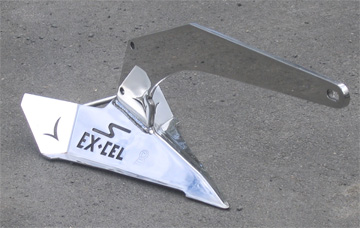Northern Spy
Guru
- Joined
- Feb 5, 2012
- Messages
- 4,092
- Location
- Canada
- Vessel Name
- Northern Spy
- Vessel Make
- Nordic Tug 26
To me, these boats have their priorities all backwards, heavily optimized for the <5% time at sea that even the most traveled boats spend, and heavily compromised for the >95% time at anchor, coastal cruising, and in port.
The sailboat hull and lightweight build definitely gives improved speed and much better fuel economy and subsequent range. That's very attractive. But in nearly every other way, I would make different choices on the boat.
I have never understood the "great room" design, especially considering the boat's mission of ocean crossing. For any night operation, it seems essential to me that the piloting location be separate from the living spaces. This is why we have pilot houses, so they can be kept dark at night without plunging the whole boat into darkness. The great room seems more suited for a coastal cruising boat that seldom sees night operation.
A master stateroom on a 65' boat that doesn't have a separate head? Really? The sink is in the stateroom, and you step directly from the stateroom into/out of the shower? Thankfully there is a separate toilet room. And the guest bathroom is a wet head? I would expect dry heads in anything over about 40'.
The staterooms are all dark, with at most one overhead hatch. It's living in the cave of a sailboat. Add some port lights.
It looks like the only way to board the boat comfortably e.g. at a floating dock level is on the extension platform. It looks like anywhere else you will need a ladder or steps. This is why trawlers have companionways and boarding gates.
I can tell you first hand that these boats are very rolly with a round hull, shallow draft, and no keel. I helped Steve Dashew reposition Cochese and he made a maneuvering turn at slow speed and the boat rolled enough to dump a bunch of stuff off the galley counter.
And I see desks in the middle of hall ways, etc. etc.
If it were Water World and we lived our lives circling the seas, I would get it, but for how most everyone uses a boat, it seems backwards. Pleasure power boats have evolved from sailboats over the past 50 years, and this seems like watching that movie all over again.
Agreed.
Not a fanboy of the boat, but I do respect the Dashews. They are the modern Eric and Susan Hiscock. And I wouldn't want any of the Wanderer's to coastal cruise either.


